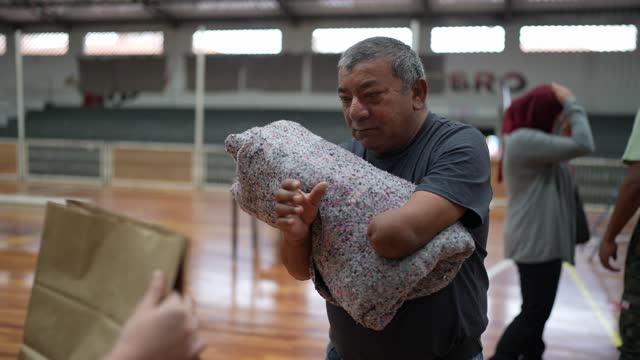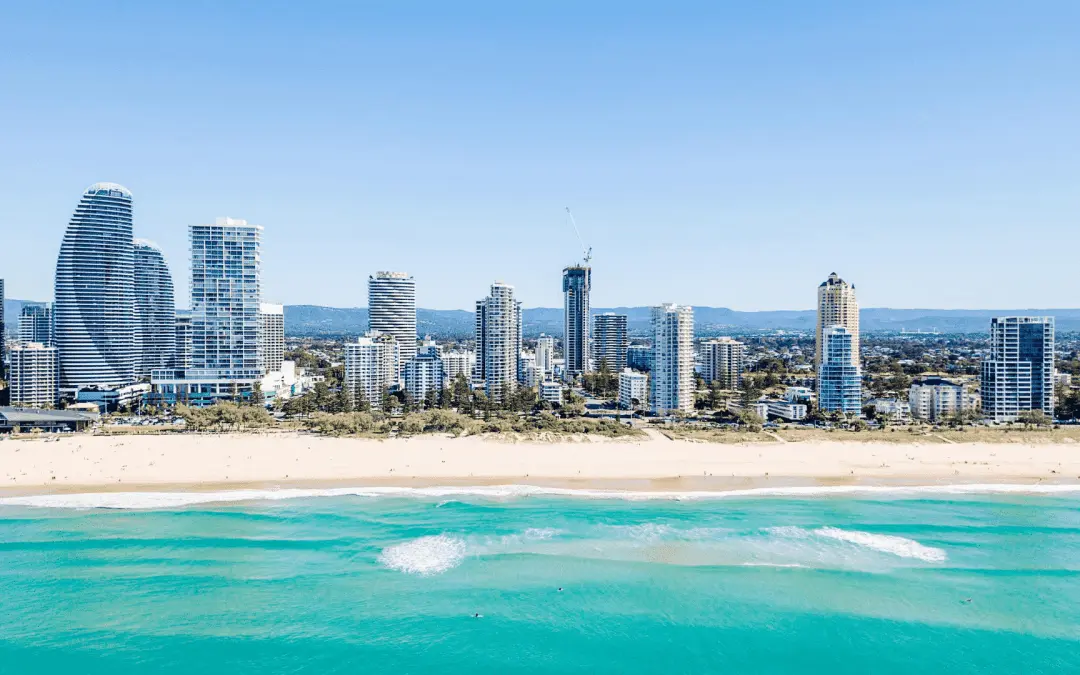Immigration
Crossing the U.S. Border: An Asylum Seeker’s Guide
By
The United States has a proud history of providing safety to people fleeing violence and persecution. Seeking asylum is a legal right protected under international and domestic U.S. law.
Asylum offers a lifeline to those fleeing dangerous situations in their countries of origin, even if that often means undertaking dangerous journeys to get refuge.
If you are granted asylum, you, your spouse, and your children will be allowed to remain permanently in the United States. However, achieving asylum is a challenging process.
This article will discuss in detail what to expect when crossing the U.S. border to seek asylum.
What is Asylum?
An asylum is a form of protection granted to individuals who can demonstrate that they are unable or unwilling to return to their country because of persecution or a well-founded fear of torture.
These could be due to race, religion, nationality, membership in a particular social group, sexuality, or political opinion.
Who is an Asylum Seeker?
An asylum seeker is someone who has fled their home in search of safety and protection in another country. They seek it elsewhere because they cannot obtain protection in their home country.
Asylum seekers may be of any age, gender, socio-economic status, or nationality, though the majority come from regions of the world suffering from conflict, disaster, and weak rule of law.
Asylee is the term used in the U.S. for people who have been granted asylum. Under U.S. immigration law, a person granted asylum can legally remain in the country without fear of deportation.
They qualify to work and travel abroad and can apply for their spouse or children under 21 to join them. Also, they can become permanent residents and, eventually, citizens, provided they meet all other requirements.
To be granted asylum, one must meet the definition of a refugee. However, international law recognizes that the refugee status determination process can be lengthy and complex.
Therefore, asylum seekers should receive certain protections before a state has officially recognized them as refugees. Asylum seekers begin their process either at the U.S. border or within the U.S.
What is the Asylum Application Process in the U.S.?
There are two primary ways in which a person may apply for asylum in the United States: affirmatively and defensively.
Affirmative Asylum
A person who is not in removal proceedings (or a person who has been designated as an unaccompanied child, even if in removal proceedings) may affirmatively apply for asylum through U.S. Citizenship and Immigration Services (U.S.C.I.S.), a division of the Department of Homeland Security (D.H.S.).
Suppose the U.S.C.I.S. asylum officer does not grant the asylum application and the applicant does not have a lawful immigration status.
In that case, they are referred to the immigration court for removal proceedings. Here, they may renew the request for asylum through the defensive process and appear before an immigration judge.
Defensive Asylum
A person in removal proceedings may apply for asylum defensively by applying with an immigration judge at the Executive Office for Immigration Review (E.O.I.R.).
In other words, asylum is used as a defense against removal from the U.S. Unlike the criminal court system, E.O.I.R. does not provide appointed counsel for individuals in immigration court, even if they cannot retain an attorney.
How Long Does it Take to Claim Asylum in the U.S.?
There are currently over two million pending asylum cases in the U.S. The backlog has led to unprecedented waiting times, forcing asylum seekers to endure waits of up to seven years.
This backlog separates asylum seekers from family members stranded abroad, interferes with integration opportunities, and damages the credibility of the U.S. asylum system.
Can Asylum Seekers Work in the U.S.?
Currently, asylum applicants must apply for employment authorization and wait at least 180 days for a work permit. When people seeking asylum come to the U.S., they want to support themselves and their families.
Rather than depend on humanitarian support as they rebuild their lives and integrate into their new communities.
Employers and host communities can also benefit from expedited work permits to meet the needs of an aging workforce and labor shortages, filling critical gaps in the labor market.
The current 180-day wait for employment authorization limits the ability of asylum seekers to provide for themselves and their families. It increases their risk of exploitation or other abusive situations, including human trafficking.

How Does Asylum Help People Fleeing Persecution?
After you receive your final approval of asylum in the U.S., you can apply for certain immigration-related and other government benefits and services. These will help you and your family adjust to living in the United States.
Be sure to act quickly because some benefits are available only for a limited time after you are granted asylum.
You are ineligible for asylee benefits if your asylum case is still on appeal to a higher court or if you only received conditional or recommended (not final) approval.
An asylee or person granted asylum is protected from being returned to their home country and authorized to work in the United States.
They may apply for a Social Security card, request permission to travel overseas, and petition to bring family members to the United States.
They may also qualify for specific government programs, such as Medicaid or Refugee Medical Assistance. After one year, an asylee may apply for lawful permanent resident status (a green card).
Once the individual becomes a permanent resident, they must wait four years to apply for citizenship.
Tips for a Successful Asylum Interview

1. Practice makes perfect
Your asylum application will include as much information as possible that could help prove that you are in danger of persecution. You must know every detail of your application, top to bottom.
In addition, you may be asked questions like “What happened on [this date]?” you will need to know the answer and be able to explain.
Prepare as much as possible by reviewing your application and practicing potential questions the asylum officer could ask. If you will utilize an interpreter, practice with them beforehand as well.
2. Make travel arrangements
You must arrive on time and attend your interview. Visit your interview location ahead of time so you know exactly where it is located, make sure you have concrete travel arrangements, and leave early on the day of the interview.
3. Prepare physically and emotionally
The interview is both physically and emotionally exhausting. Get plenty of sleep the night before, eat a good meal the day of, and ensure you are prepared to recount extensive details of potentially embarrassing, complex, or traumatic events.
4. Wear appropriate clothes
Wear clean and neat clothing that will easily allow you to show any scars or physical signs of persecution that may be relevant to your asylum application.
5. Correct mistakes
If you discover inconsistencies, mistakes, or neglected details in your application, share those with the asylum officer at the start of the interview and explain them if necessary.
These flaws could cause the asylum officer to question your credibility, so you must clarify them immediately.
6. Be honest, detailed, and consistent
Do not hold anything back. Tell the truth of your situation, include every detail you can recall, and ensure your story is consistent with the details you included in your application.
7. Don’t be afraid to cry
Asylum Officers understand that most asylum applicants have been through traumatic and terrifying situations that often involve a great deal of emotion. It is okay to cry and show emotion during your asylum interview.
Questions During Asylum Interview
The asylum substantive interview is the immigration office’s chance to ensure that you are not lying and that your story is credible.
Some of these questions will look very simple but tricky when asked repeatedly, so focus on precisely what the interviewer says.
Some of the questions will be:
- About you – Your date of birth, nationality, criminal record, etc
- About your story
- When did you leave your home country?
- Why did you leave?
- Do you have any family left there? Are you in touch with them?
- Have you been to other countries? Have you tried to claim asylum there?
- About your asylum application
- What is the threat you are escaping?
- Who is making you feel unsafe?
- How did you collect your evidence?
Try to answer each question as precisely as possible without guessing or speculating. For example, “When did you leave your home country?”
If you remember the exact date, great! But often, we might not remember specific dates—especially if we are not keeping a note of them.
What do you do in case you don’t know the date? Try to be as close to the actual date as possible. Which month? What season was it? Last summer? Do you remember it around some festival?
Be prepared for the same questions to be repeatedly asked – stay calm. Keep a cool head, ask for water if needed, take a break if it feels too overwhelming, and start again!
TIPS
- Even the simplest of questions seem overwhelming when asked repeatedly. Be prepared to be pushed just a bit.
- Conduct at least one to two practice interviews with your lawyer/caseworker to build your confidence.







